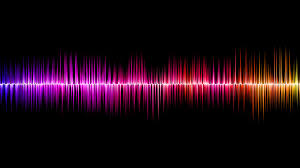 Lots of talk about remote care technologies -- but will the 2020 crisis convert to actual technology change? So much has changed in recent months as a result of Covid-19 -- startling changes that previously were incremental. Consider reimbursement for telehealth technologies, a wave of free engagement software, distribution of tablets to senior centers and Echo Dots to senior living, to remote care voice tech for high needs seniors and government-funded competition to combat social isolation. And no doubt that's just a subset of what's happening as frantic attempts are made to close gaps in communication, care delivery, safety, social isolation and more.
Lots of talk about remote care technologies -- but will the 2020 crisis convert to actual technology change? So much has changed in recent months as a result of Covid-19 -- startling changes that previously were incremental. Consider reimbursement for telehealth technologies, a wave of free engagement software, distribution of tablets to senior centers and Echo Dots to senior living, to remote care voice tech for high needs seniors and government-funded competition to combat social isolation. And no doubt that's just a subset of what's happening as frantic attempts are made to close gaps in communication, care delivery, safety, social isolation and more.
Consider the components of technology to deliver remote care. As the world settles into a post-pandemic phase, what will matter most for the care of and benefit for older adults? Of course, ramping up access to technology using what’s available today is a good start. Organizations everywhere are rallying to the need to fix or solidify connectivity, whether as part of national policy directive, care delivery, family pressure, staff retention, or maintaining service delivery. These include senior housing, skilled nursing facilities, home care, home healthcare, or healthcare providers. High speed internet connections, smartphone adoption, software access will likely follow. What technology considerations will need to be next, so that uptake and deployment can move from a desperate to a more measured pace?
What are the dimensions of remote care technology? What should they be? After the re-opening and stabilization phase of businesses in 2020 and beyond, families, seniors and care delivery organizations will want to do better at obtaining and delivering remote care in its many forms -- i.e. when the care recipient is elsewhere. What will be the priority? Telehealth demands continued investment -- phone, video, remote patient and/or device monitoring. Along with telehealth, will wearables for health and wellbeing be a priority post Covid-19? What about voice and other engagement technologies – or other tools for caregiver teams and family connection? And for home care – is there a better way to engage and retain the worker? What changes will be wrought in smart home categories – sensors, robotics, predictive analytics that improve remote monitoring and carein a post-Covid world?
Thoughts welcome. With the pandemic at some point behind them, how/will senior-focused organizations -- including seniors centers, senior living, healthcare providers, home care and home health care -- change their use of technology next year and beyond?
from Tips For Aging In Place https://www.ageinplacetech.com/blog/what-future-remote-care-technology-and-older-adults
 Innovation for older adults – not keeping pace in the US. We get pretty excited when a
Innovation for older adults – not keeping pace in the US. We get pretty excited when a  Approaching the 20th year in this job category, so let’s reflect. OPINION ON.
Approaching the 20th year in this job category, so let’s reflect. OPINION ON. 
 Voice tech is pervasive – for some, but hardware market adoption may be slowing. At the end of April,
Voice tech is pervasive – for some, but hardware market adoption may be slowing. At the end of April,